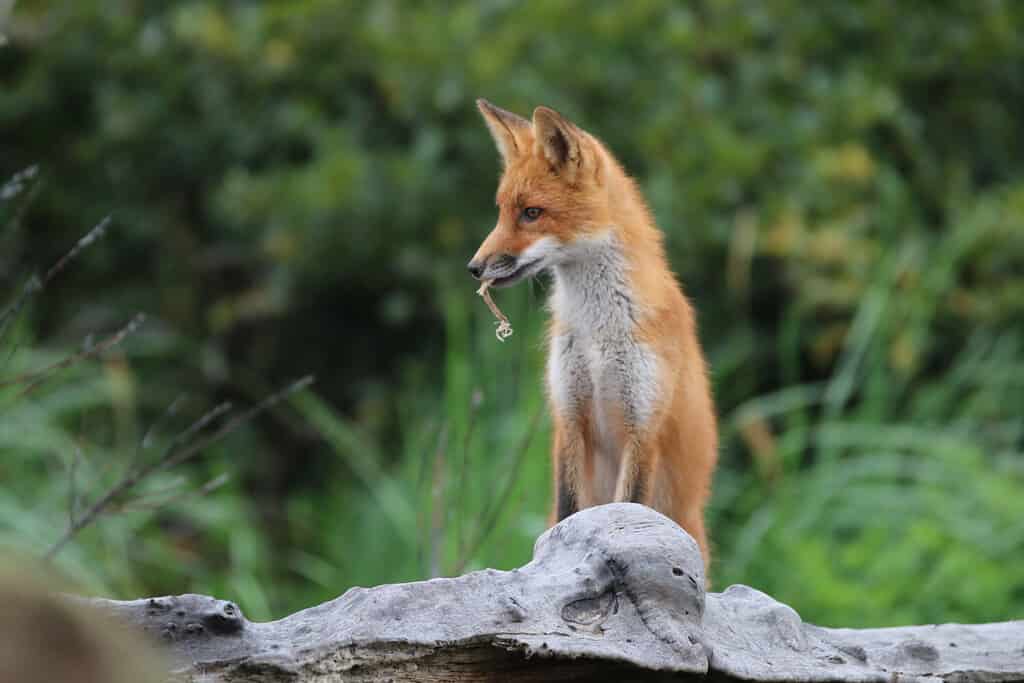Foxes are some of the most common animal species in the world. They roam on every continent except Antarctica. They’re part of the folklore of many cultures, often depicted as sly and clever tricksters. Their relationship with people has been troubled, both because they prey on small livestock such as chickens and because their fur has sometimes been valued for coats and hats. Although wearing fur has fallen out of fashion in much of the world, foxhunting continues to be an elite sport in the United Kingdom and countries influenced by British culture. Closer to home in the United States, foxes of various species roam across most of the country. Kansas, near the geographic center of the country, is blessed with three different species of fox: the red fox, the gray fox, and the swift fox. Read on to learn more about foxes in Kansas.

Foxes are found on every continent except Antarctica.
©Ian William Hromada/Shutterstock.com
Facts About Foxes
Appearance
Foxes are mammals of the family Canidae, which makes them relatives of wolves and jackals. They range from small to medium-sized, weighing anywhere from 1.5 to 19 pounds. Foxes have pointed noses and ears, creating a triangular-shaped face. They are especially noted for their bushy tails, sometimes called “brushes.” An interesting and little-known fact about foxes is that they walk on their toes and their claws are partially retractable. Foxes have a wide vocal range, making yips, barks, yelps, growls, and even laughing noises.
Habitat and Diet
Foxes thrive in all sorts of habitats: wetlands, deserts, forests, and snow-swept mountains. Because they’re so adaptable and are active mainly at night, they have been able to adjust well to suburban environments. Even though they’re beautiful creatures, they are not always welcome neighbors in the suburbs because they have been known to attack pet cats and small dogs. Foxes are omnivores, feasting on mice, squirrels, rabbits, bird eggs, insects, and other small animals as well as carrion. They will also eat berries, fruits such as apples, and corn from fields. In populated areas, they will get into garbage or pet food that is left unsecured. Their most common predators are dogs, coyotes, bobcats, and humans.

Foxes have adapted to urban life in part by rummaging through garbage.
©bardzo.photo/Shutterstock.com
Foxes in Kansas
1. Red Fox
Red foxes live in most of Canada and the United States except for some parts of the Southwest. They range all over Kansas but are especially prevalent in the eastern part of the state. Their species name is Vulpes vulpes and they are one of twelve fox species. They are the largest of all the foxes, with a length of 36-42 inches and weighing 6.5-24 pounds. Surprisingly, red foxes are not always red but can come in color variations such as grey, brown, black, or silver while still being the same species. They have a double coat of fur that is soft underneath and coarse on the outside, making them desirable for fur products. This is one of the reasons they are so widely distributed, as settlers have deliberately introduced them into the wild as a valuable fur-bearing resource. Red foxes are bolder than some other species and more willing to venture close to places where humans live. They often have more than one den for stashing food and giving them a quick hiding place from a predator. They’re most active at night.

Red foxes in Kansas can thrive in a wide variety of habitats.
©Ondrej Prosicky/Shutterstock.com
2. Gray Fox
Gray foxes are found in most of the United States, Mexico, and Central America, but not in the northern Rockies. In Canada, they live only in a few areas of the southernmost part of the country. Their species name is Urocyon cinereoargenteus. In Kansas, their main habitat is in the wooded area of the easternmost part of the state and along the tributaries of the Arkansas River. However, their numbers are not as great as the red fox, in part because of their timid nature and reluctance to be near people. They like to live in rocky and brush-covered areas where they can find food and shelter. Grey foxes are about 24 inches long and have a 10-inch tail. They weigh 7-14 pounds on average. Unlike red foxes, they are able to climb trees due to their rotating wrists. Their coats are silver-gray with streaks of red on their chest and sides. They also have some black-and-white markings on their faces and tails.

Gray foxes can easily climb trees because of their rotating wrists.
©Sean R. Stubben/Shutterstock.com
3. Swift Fox
Swift foxes look like miniature coyotes. Their scientific name is Vulpes velox. They are about the size of a housecat, weighing just three to seven pounds and reaching a length of 27-32 inches from their heads to the tip of their tails. Their fur is tan with shades of gray and yellow with a pale yellow or white throat, chest, and underbelly. The swift fox lives in the grasslands of the Great Plains of the United States and Canada. In those wide-open spaces, it has room to run and can achieve speeds up to 38 mph in pursuit of prey or to avoid predators. Because of its small size, the swift fox has more natural predators than other fox species, including birds of prey such as owls and eagles.

Swift foxes can reach speeds of 38 mph when hunting.
©Ghost Bear/Shutterstock.com
What To Do if You Spot a Fox
Some people are thrilled to see a fox while others are frightened. Depending on the circumstances, either of these reactions can be totally justified. Foxes are gorgeous creatures, so as long as you keep a safe distance, you can feel blessed to have the chance to observe them in the wild. They can also be quite curious and trusting of people. Check out for example this wild fox in Colorado who enjoys coming to listen to a guy play the banjo:
Even though close encounters like this are adorable, they can also be quite dangerous. Foxes can have rabies, so one that behaves strangely or aggressively may be a serious danger to people or pets. Cats and small dogs can also be prey for foxes, although more typically they seek out mice and other small prey. It is important not to feed foxes because this teaches them to depend on people for food and causes them to be bold about approaching humans. This can present a danger that a frightened person will attack the fox in the future, or a frightened fox will bite a person.
How To Get Rid of a Fox
If you have a fox on your property and don’t want it there, perhaps because you’re afraid it will hurt your pets, children, or small livestock like poultry, here are some tips to get rid of it:
- Call your local animal control authorities.
- Make noise and increase your activity near their den site, such as shouting or running a motor.
- Use slingshots or a shotgun with rubber buckshot to frighten off the fox. This can be effective even if you don’t hit the animal itself, but just nearby.
- Use predator calls, such as the coyote howler, or motion-activated noisemakers with sirens and flashing lights.
- Get a large guard dog for your property.

Keeping a guard dog in your yard is a sure-fire way to scare off foxes . . . and people!
©iStock.com/Milan Krasula
Can Foxes Make Good Pets?
It is illegal to keep a fox as a pet in Kansas and all but 15 other states. Don’t feel too bad about that though, because honestly, they do not make very good pets. Unlike dogs and cats that have been bred for thousands of years to make good companions for people, foxes are still wild creatures with instincts to hunt and watch out for themselves, not to adjust to people’s needs. Foxes have a lot of energy and will be destructive if they don’t get enough exercise. They like to mark their territory with a strong musk that will stink up your house. They can also be very loud, especially during mating season when they make loud human-like screams at night.
Maybe one day foxes will be better pets. For over 50 years an experiment in selective breeding to domesticate foxes has been conducted in Russia. This has resulted in foxes with distinctive dog-like behaviors such as wagging their tails and licking people. They even started to develop physical changes like floppy ears and changes in their skull shapes. Check it out in this video:
The photo featured at the top of this post is © Daniel Rodriguez Garriga/Shutterstock.com
Thank you for reading! Have some feedback for us? Contact the AZ Animals editorial team.






